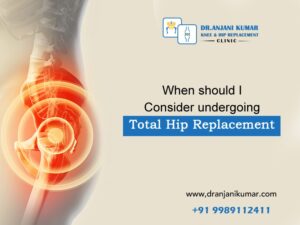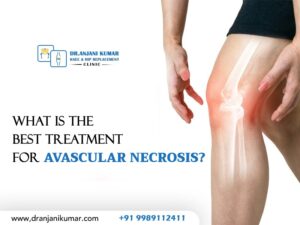A grade 2 knee sprain is a form of knee ligament injury where some ligaments in the knee joint are partially torn or stretched. Several ligaments support the knee joint, help stabilise it, and limit excessive movement. The ligaments are more severely injured in a grade 2 knee sprain than in grade 1, but not to the same extent as in grades 3 and four. The ligaments could be partially ripped, resulting in mild discomfort, bruising, and joint instability. During exercise, the knee may feel flimsy or give way.
The medial collateral ligament (MCL) on the inside of the knee and the lateral collateral ligament (LCL) on the outside are common ligaments that can be harmed in a grade 2 knee sprain. Additional structures like the anterior cruciate (ACL) or posterior cruciate ligament (PCL) may also be affected in more complicated situations. RICE (rest, ice, compression, and elevation) is frequently combined with physical therapy exercises to restore strength and stability while treating a grade 2 knee injury. It could be suggested in some circumstances to use a knee brace or support to safeguard and keep the joint stable while it heals. Surgical intervention can be necessary in severe cases or cases with accompanying injuries.
For a precise diagnosis and the best course of action for a grade 2 knee sprain, speak with a medical expert, such as an orthopaedic specialist or sports medicine physician.
Causes and Symptoms:
Causes:
Grade 2 knee sprains can have various reasons, but they typically result from the knee joint being subjected to sudden or severe force.
Typical causes include:
Sudden twisting or pivoting movements: When the foot is firmly placed on the ground, sudden twisting or pivoting movements of the knee might cause ligament strain.
Direct impact: The ligaments may stretch or rupture due to a direct hit to the knee, such as during a collision or fall.

Activities involving sports: Sports involving abrupt stops, direction changes, or jumping can increase the risk of knee sprains. Examples of sports include football, basketball, ski racing, and soccer.
Although the severity of the symptoms of a grade 2 knee sprain might vary, they are often worse than those of a grade 1 sprain.
Typical signs include:
Discomfort: There is moderate to severe discomfort around the knee joint, especially when moving or doing weight-bearing activities.
Swelling: After an injury, swelling is common in the knee.
Instability: The knee may feel shaky or give way, making it challenging to carry out activities that call for stability or bear weight.
Restricted range of motion: Reduced ability to fully bend or straighten the knee due to discomfort or oedema.
Bruising: Blood vessels injured during the injury may result in bruising around the knee or lower leg.
Tenderness: The ligament injury area may be sore to the touch.
It’s crucial to remember that these symptoms are not unique to grade 2 knee sprains. Therefore, a qualified medical professional’s diagnosis is required to establish the injury’s severity and choose the best course of action for treatment.

Can you walk on a Grade 2 knee sprain?
The time it takes to walk on a sprained knee might change depending on the sprain’s severity, specific variables, and the treatment method used. Grade 2 knee sprains, in which partial ligament tears or straining, typically require more time to heal than minor grade 1 sprain.
People with a grade 2 knee sprain frequently experience initial difficulties walking and may need crutches or other assistive aids to take the weight off of the injured knee. Usually, the initial goal of treatment is to lessen discomfort, inflammation, and swelling while encouraging ligament recovery. The recovery period for walking might take a few days to several weeks with the proper care, which includes rest, ice, compression, elevation (RICE), and physical therapy. It’s crucial to heed the advice of your healthcare provider because they may offer a more precise estimate based on your particular injuries and development.
Strengthening muscles around the knee joint and moderate weight-bearing activities are usually required for recovery and independence in walking. Physical therapy exercises are frequently recommended to increase the knee’s range of motion, stability, and overall functionality.
Always remember that everyone’s healing process is different, so it’s important to pay attention to your body and not try to recover too quickly. If you’re unsure of when you should start walking on your injured knee, speak with a medical expert who can advise you specifically and keep track of your recovery.
After a grade 2 knee sprain, you might initially need to rely on aids like crutches or a knee brace to relieve weight off the injured knee and accelerate healing. As the healing process continues and the pain and swelling subside, you can gradually put weight on the injured leg.
You may be able to begin placing some weight on the hurt leg while using crutches for support during the first week or two. The precise timetable for going from using crutches to walking unassisted will depend on things including your level of pain, how much the swelling has subsided, and the advice of your healthcare provider.
You might initially need to rely on aids like crutches or a knee brace after suffering a grade 2 knee sprain to relieve weight off the injured knee and accelerate healing. You can slowly begin to bear weight on the injured leg as the healing process continues and the pain and swelling subside.
Usually, within the first week or two, you may be able to begin supporting yourself with crutches while putting some partial weight on the wounded leg. Depending on variables, including pain intensity, oedema reduction, and advice from your healthcare provider, the precise time frame for going from aided to crutch-free walking will vary.
Depending on the degree of the sprain, the intensity of pain, and other considerations, walking on a grade 2 knee injury can be difficult. Partial tearing or straining of ligaments, which can cause discomfort, oedema, and temporary instability of the knee joint, characterise grade 2 knee sprains.
People frequently experience pain while putting weight on the injured leg in the early stages of a grade 2 knee sprain or have trouble walking. Medical practitioners frequently advise restricting weight-bearing activities and offloading weight from the damaged knee using assistive devices like crutches or a knee brace. While the ligaments recover, these devices can help manage pain and offer support.
It may be difficult to walk on a grade 2 knee sprain, depending on the extent of the sprain, the intensity of pain, and personal variables. Partial ligament tearing or stretching results in grade 2 knee sprains, which can cause discomfort, oedema, and brief knee joint instability.
It is typical for people to have trouble walking or feel discomfort while bearing weight on the injured leg in the early stages of a grade 2 knee sprain. Medical specialists frequently advise minimising weight-bearing activities in these situations and using assistive equipment like crutches or a knee brace to offload weight from the injured knee. These gadgets might offer support and pain relief as the ligaments recover.
The capacity to walk on a grade 2 knee injury can vary, and it’s vital to remember that everyone recovers differently. For a proper diagnosis, treatment strategy, and advice on weight-bearing activities during your healing process, it is always advised to speak with a healthcare professional, such as an orthopaedic specialist or physical therapist. They can assess your health, track your development, and offer tailored guidance based on your circumstances.
About Dr Anjani Kumar
As an orthopaedic surgeon in Hyderabad, I try to provide patients with as many options as possible for hip and knee treatments to help each patient have the greatest results. I carefully consider the specific sorts of injuries and need to be comfortable offering a specialised solution before recommending the best course of therapy for each patient. My patients’ enhanced mobility and pain reduction are always my top priorities, as these will enable them to resume an active lifestyle. In more severe cases, especially when the joint has collapsed, or the bone has suffered extensive deformation, knee replacement surgery may be advised.
Knee replacement surgery may be recommended in advanced cases, especially if the joint has collapsed or the bone has become severely deformed.
Dr Anjani Kumar has 20 years of experience and successfully performed 2000 knee replacement surgeries, 350 hip replacement surgeries, and 500 pelvic acetabular surgeries throughout his career. Please get in touch with us on Mobile: at +91 9989112411 and by E-mail: anjanikumar@ gmail.com




